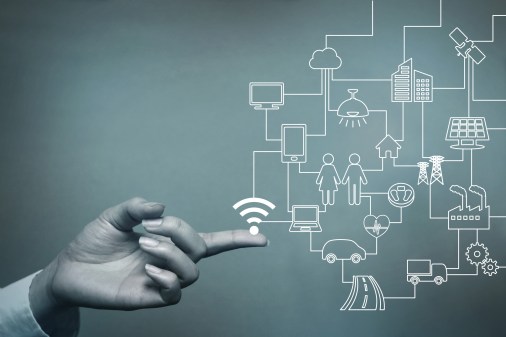What Intel believes is key to the power of the Internet of Things
The opportunity that the Internet of Things brings to the federal government is a convergence of all of the goals agencies already have: use the cloud, big data and mobility options to develop and push forth innovative citizen services. But what challenges do agencies still have to overcome before IoT becomes mainstream?
A number of IoT experts from Intel Corp. recently examined this issue and found that all framework levels of IoT must achieve interoperability in order for the government to see some real impacts from this growing phenomenon.
One of the key ways Intel experts say this interoperability will be achieved is by an incremental implementation within legacy systems instead of a complete technologic overhaul.
“It is unrealistic to believe that implementation of IoT will be accomplished as a systemic overhaul, but rather as a time-phased implementation of new IoT technologies, such as a gateway that would support incremental benefits,” Intel IoT Senior Solutions Architect Tiffany Sargent wrote in a
white paper released last week.
Sargent believes this steady progression to interoperability can be achieved by sticking embedded sensors and “instrumented machines” along the “edge,” which would allow people to harness data at multiple, scalable levels.
“As data moves through an IoT solution, it can seamlessly integrate with other data (data fusion), systems and infrastructure,” Sargent wrote. “Significant benefits result when compute begins at the edge and only the desired data is moved for additional processing in the cloud or shared in real time with an end user.”
While the edge serves as the front-facing part of IoT that users will interact with, Intel said a successful IoT framework must have connectivity, manageability and security baked into all levels: cloud networks, gateways and edge devices.
These gateways, which connect data repositories to edge devices, are at the heart of both simple and complex IoT systems. Intel said these gateways are crucial in systems such as a wearable heart monitor that transmits anomalies to a doctor’s office or predictive maintenance alerts from algorithms tied to building management systems.
However, above anything else, Intel said data interoperability is the most significant aspect since cross-system data connections and modifications will not be tenable in the future IoT ecosystem. Issues like timing and synchronization will become an extremely complex issue and any changes run the risk of compromising data across the entire network.
With new IoT uses and standards coming out of the public sector, particularly out of working groups located at the National Institute of Standards and Technology, the possibilities IoT brings to the government are immense. But Intel said that potential wouldn’t be fulfilled without a magnified focus on interoperability.
“With the availability of new technology, thought leadership and establishment of consistent IoT policies and global standards that support interoperability, both the public and private sectors can continue to explore new ways to harness the power of IoT technologies, such as edge compute, creating a world that is more efficient and productive,” Sargent wrote.






